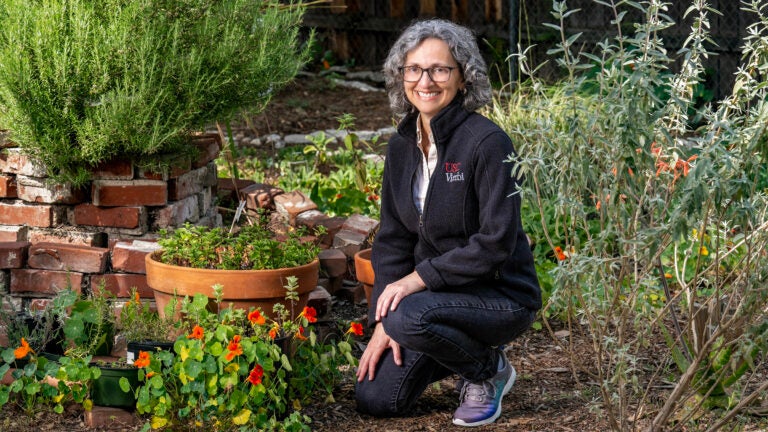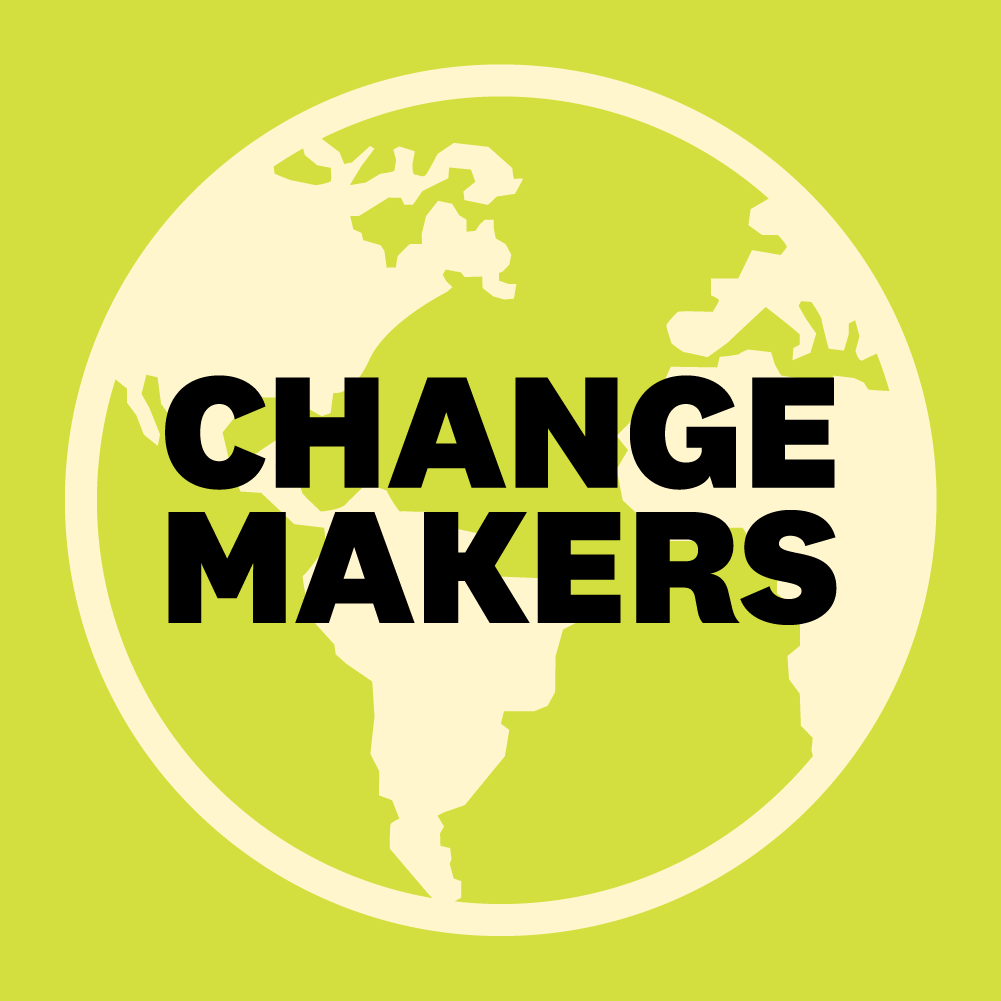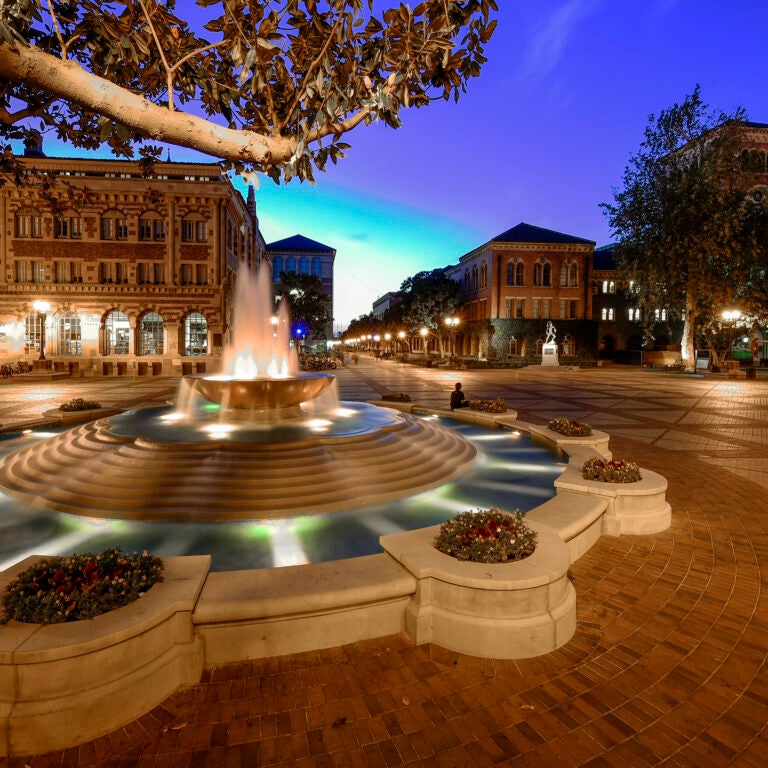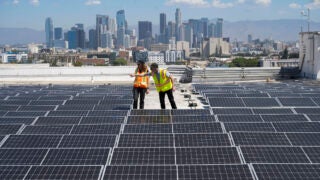
Mahta Moghaddam describes herself as “a tech person who works with scientists to help them get better data so they can make more informed decisions.” (Photo/Gus Ruelas)
From permafrost to policy: Mahta Moghaddam is tracking changes to the Earth in its most extreme environments
The USC researcher shares how her work in remote sensing is helping scientists, students and institutions take action.
USC Trojan Family Magazine is featuring Trojans who have made a significant difference in sustainability at the University of Southern California.

The front lines of environmental change are often remote and difficult to access — from the frozen poles to the dense Amazon rainforest.
Yet these regions serve as critical indicators of global climate shifts. Monitoring them is essential for shaping policy and action, but the complexity of the science can make it difficult to communicate urgency to the public and decision-makers alike.
Making the technical accessible underlies the work of Mahta Moghaddam, professor of electrical and computer engineering and vice dean for research at the USC Viterbi School of Engineering. As a researcher, Moghaddam develops remote sensing technologies that can track soil moisture and detect permafrost melt. As co-director of the President’s Working Group on Sustainability, she’s also helping USC turn data into action.
We spoke with Moghaddam to talk about how her work is helping us better understand the planet, and how she’s helping USC walk the walk on sustainability.
How do you explain your research to someone outside your field?
Moghaddam: When I’m talking to someone outside my field — say, at a dinner party or community event — I try to keep it simple and relatable. I usually say something like, “I’m a tech person who works with scientists to help them get better data so they can make more informed decisions.” That often opens the door to a conversation about how we use technology to understand the world around us. People are naturally curious about satellites and drones, so I explain that we use these tools to monitor things like soil moisture, vegetation health and even wildfire risk. It’s all about turning complex signals into useful information.
What I really try to convey is that my work sits at the intersection of engineering and environmental science. I build systems that collect data from hard-to-reach places — like deep in the soil or high in the atmosphere — and then translate that data into insights that can help farmers, firefighters, climate scientists and policymakers. It’s not just about the technology; it’s about making that technology meaningful and impactful for real-world challenges.
What does your work in remote sensing involve?
Moghaddam: We put radar instruments on satellites, airplanes and drones to study the environment — everything from soil and vegetation to cities and oceans. For example, we measure water content in vegetation, which is critical for understanding wildfire risk. Our goal is to provide data that helps agencies predict and respond to environmental challenges.
Where is your research headed next?
Moghaddam: There are two major directions. First, on the technology side, we’re developing multiagent sensing: coordinated systems that work together across satellites, drones and ground sensors. For example, if a ground sensor detects a change in permafrost, it can trigger drones and satellites to take targeted measurements. Artificial intelligence plays a big role in managing all this data.
Second, we need more interdisciplinary collaboration. We’re working with social scientists, policy experts and health researchers to ensure that the data we collect leads to better public policy and improved human health.
What kind of progress has USC made in sustainability?
Moghaddam: USC has made significant strides in sustainability over the past few years, and it’s been exciting to be part of that transformation. Through the work of the President’s Working Group on Sustainability and support from university leadership, we’ve implemented tangible changes across campus operations. We’ve reduced greenhouse gas emissions by 43%, cut water consumption by 20% and increased our waste diversion rate to 55%. One of the most visible changes has been the elimination of single-use plastic bottles on campus, which has already prevented more than 3 million bottles from entering the waste stream. These are measurable, impactful steps that reflect a strong institutional commitment to environmental responsibility.
How is USC integrating sustainability into education and research?
Moghaddam: We’re embedding sustainability into the academic and research fabric of the university. More than 8,000 students are now enrolled in courses with a sustainability focus, and we’re continuing to expand those offerings. We’ve also launched a seed funding program to support high-risk, high-impact sustainability research, which has already yielded promising results. What’s especially encouraging is that these efforts are not just top-down; they’re driven by a passionate community of students, faculty and staff who are eager to make a difference. It’s a grassroots movement that’s gaining momentum, and we’re just getting started.
What’s your vision for sustainability at USC and beyond?
Moghaddam: At USC, our vision for sustainability is about more than just reducing harm; it’s about creating the conditions for people and the planet to thrive. At USC Viterbi, sustainability is one of our core pillars, and we’re integrating it into research, education and campus life. We want our students to graduate not only as skilled engineers but as leaders who understand the broader environmental and societal impact of their work.
Looking beyond USC, I envision a future where sustainability is embedded into every aspect of society, from public policy and industry to everyday decision-making. That requires interdisciplinary collaboration, inclusive innovation and a commitment to making science accessible and actionable. Ultimately, it’s about empowering people with the tools and knowledge to build a more resilient, equitable and healthy world.



